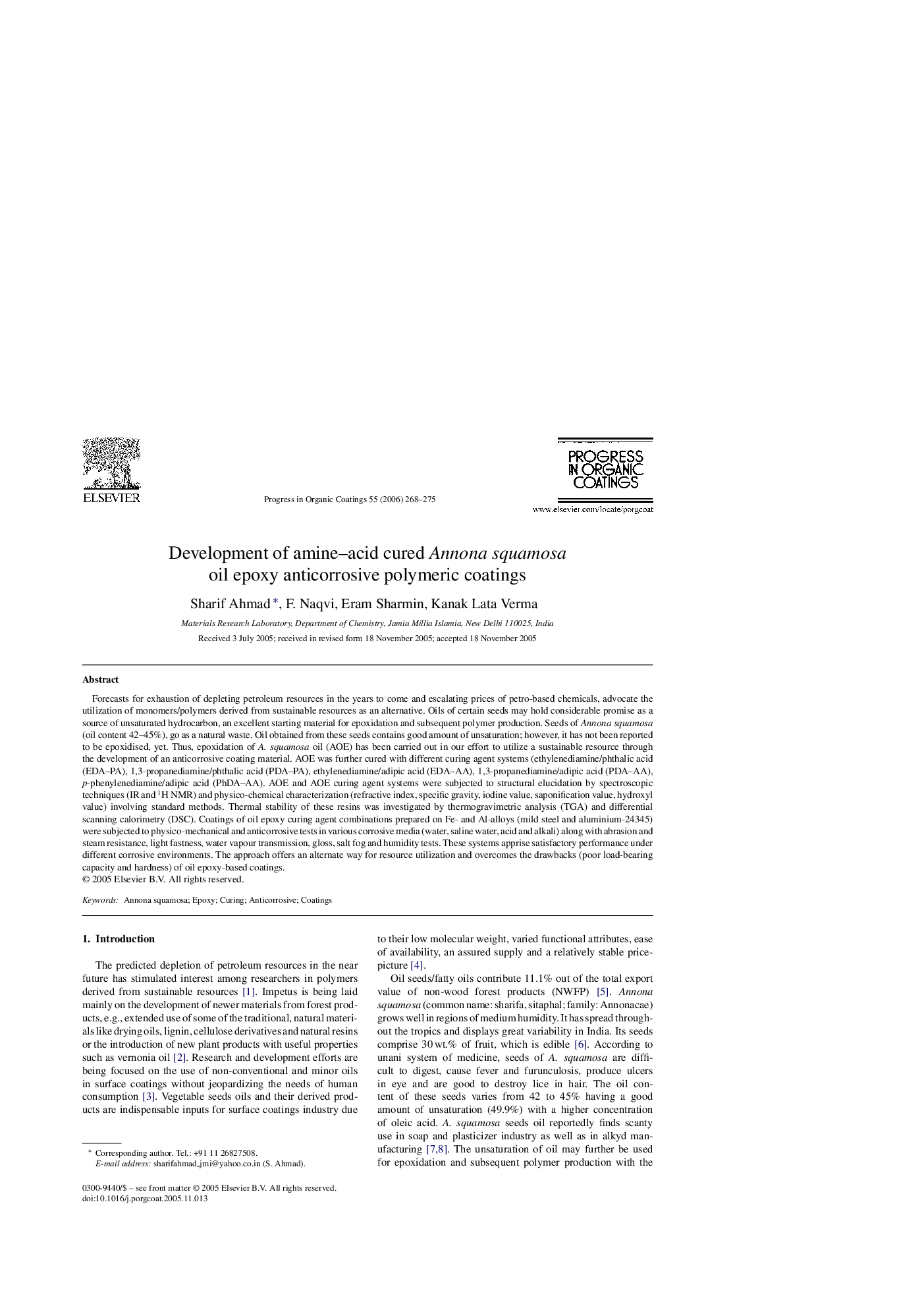| Article ID | Journal | Published Year | Pages | File Type |
|---|---|---|---|---|
| 694243 | Progress in Organic Coatings | 2006 | 8 Pages |
Forecasts for exhaustion of depleting petroleum resources in the years to come and escalating prices of petro-based chemicals, advocate the utilization of monomers/polymers derived from sustainable resources as an alternative. Oils of certain seeds may hold considerable promise as a source of unsaturated hydrocarbon, an excellent starting material for epoxidation and subsequent polymer production. Seeds of Annona squamosa (oil content 42–45%), go as a natural waste. Oil obtained from these seeds contains good amount of unsaturation; however, it has not been reported to be epoxidised, yet. Thus, epoxidation of A. squamosa oil (AOE) has been carried out in our effort to utilize a sustainable resource through the development of an anticorrosive coating material. AOE was further cured with different curing agent systems (ethylenediamine/phthalic acid (EDA–PA), 1,3-propanediamine/phthalic acid (PDA–PA), ethylenediamine/adipic acid (EDA–AA), 1,3-propanediamine/adipic acid (PDA–AA), p-phenylenediamine/adipic acid (PhDA–AA). AOE and AOE curing agent systems were subjected to structural elucidation by spectroscopic techniques (IR and 1H NMR) and physico-chemical characterization (refractive index, specific gravity, iodine value, saponification value, hydroxyl value) involving standard methods. Thermal stability of these resins was investigated by thermogravimetric analysis (TGA) and differential scanning calorimetry (DSC). Coatings of oil epoxy curing agent combinations prepared on Fe- and Al-alloys (mild steel and aluminium-24345) were subjected to physico-mechanical and anticorrosive tests in various corrosive media (water, saline water, acid and alkali) along with abrasion and steam resistance, light fastness, water vapour transmission, gloss, salt fog and humidity tests. These systems apprise satisfactory performance under different corrosive environments. The approach offers an alternate way for resource utilization and overcomes the drawbacks (poor load-bearing capacity and hardness) of oil epoxy-based coatings.
